Kydd Pollock wants to make one thing clear up front: he was not attacked by a shark.
This might be an unusual request to start an interview, and even more so for Pollock. After all, his head was once in a gray reef shark’s mouth, the lower teeth biting into his snorkel mask. The event has been featured on television programs including Shark Week. But it wasn’t an attack.
“The shark was just trying to get out of a horrible situation it was put in,” says Pollock, fisheries science manager for The Nature Conservancy. “It was a stressed-out animal that didn’t know what to do. It wasn’t attacking me. It was trying to save itself.”
Pollock was using a large net to catch another fish species for research purposes, when the shark was inadvertently cornered. While the encounter left him with numerous stitches across his face, he was back in the water as soon as his wounds healed.
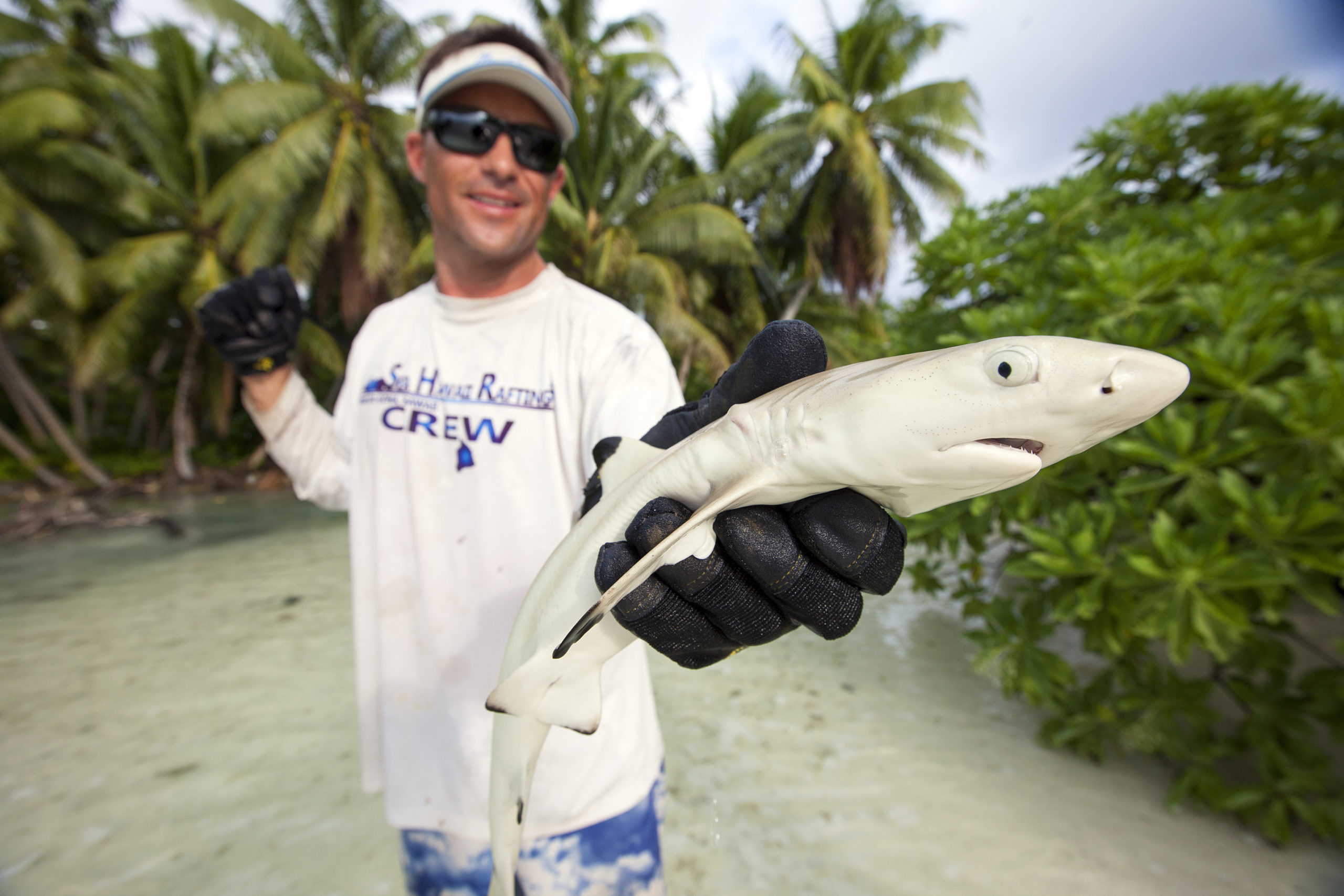
“I’ve spent a lot of time in the ocean,” says Pollock. “Whenever I have an encounter, whenever I get a sting, the scientist in me comes out. I think about where I was, what I was doing, what I could have done differently.”
The casual beachgoer will not face the same scenarios as Pollock. But he believes taking the same approach – learning about the animals, their habitats and habits – can avoid unpleasant or painful encounters. While an uptick in shark bites captures the news headlines, following some safety tips can help minimize your risk.
“You just have to look at the natural history and evolution of these creatures for clues on things to avoid,” Pollock says.
Here are some tips for wading and swimming safely with the local wildlife.
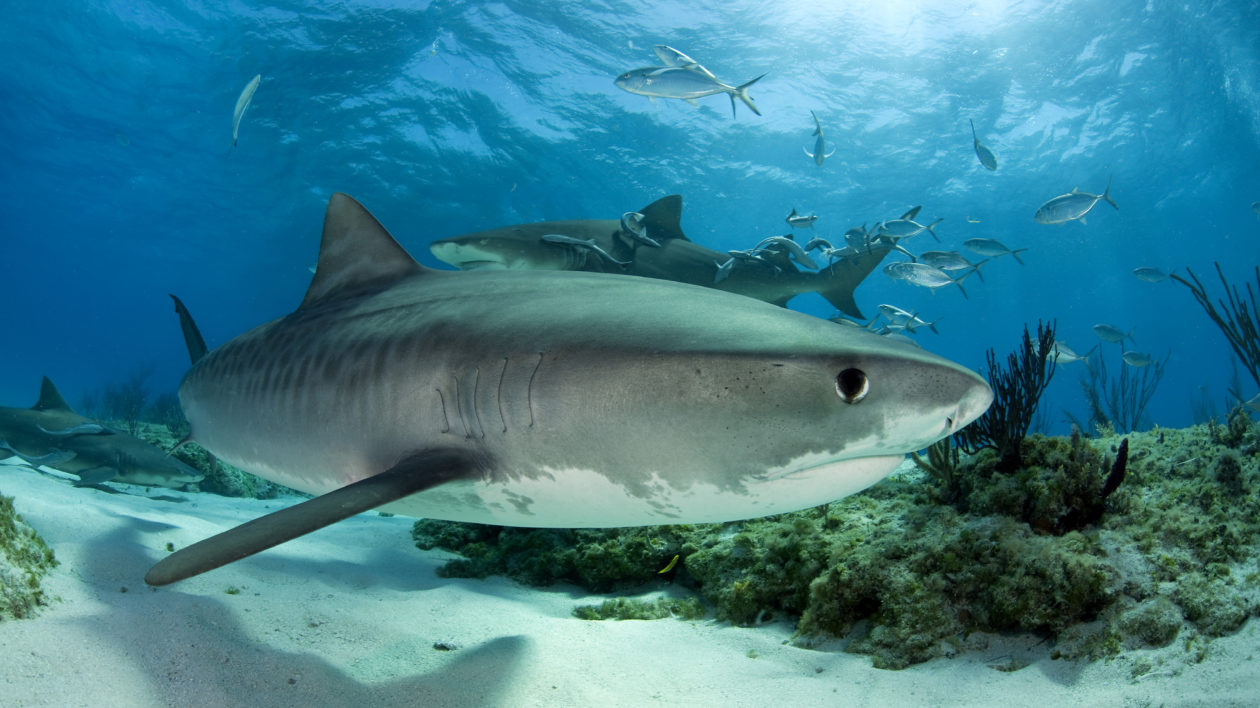
Swim in Clear Water
Shark bites are often a case of mistaken identity. Sharks aren’t hunting for humans, they’re just hungry. Some sharks take advantage of murky water, using their sensory receptors to detect prey. But it can also be hard for them to tell if you’re something to avoid or something to eat.
Unfortunately for humans, they test potential prey with their teeth (they have no hands, after all), so swimming in clear water can decrease the chances of you being mistaken for food.
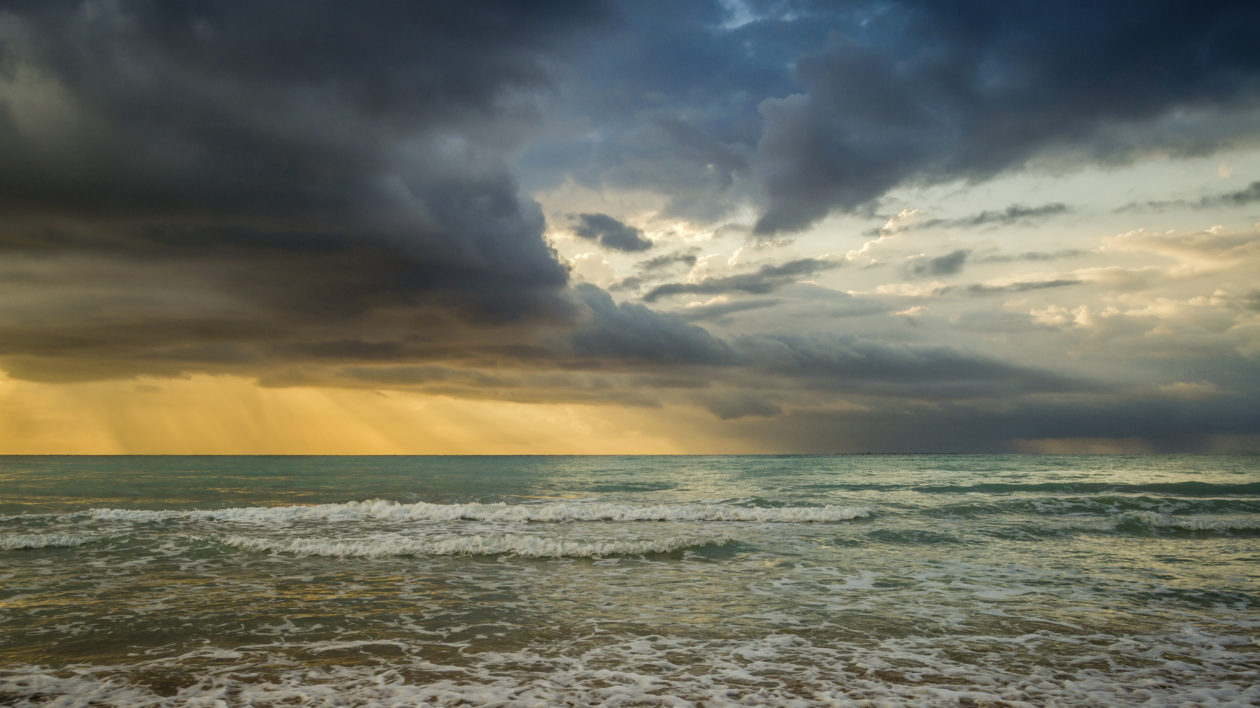
Swim at Midday
Many sharks are crepuscular feeders, meaning they’re more actively looking for a meal at dawn and dusk. It’s therefore best to stay out of the water until the sun rises well into the sky in the morning and return to land an hour or so before sunset.
It also pays to check local conditions. Sharks are often following movements of small fish species up and down the coastline. When schools of baitfish are in the area, the sharks are actively feeding. And they may mistake your body mass for a ball of anchovies.
“If there’s a feeding event at the beach you’re visiting, I wouldn’t be out there practicing my backstroke,” says Pollock.
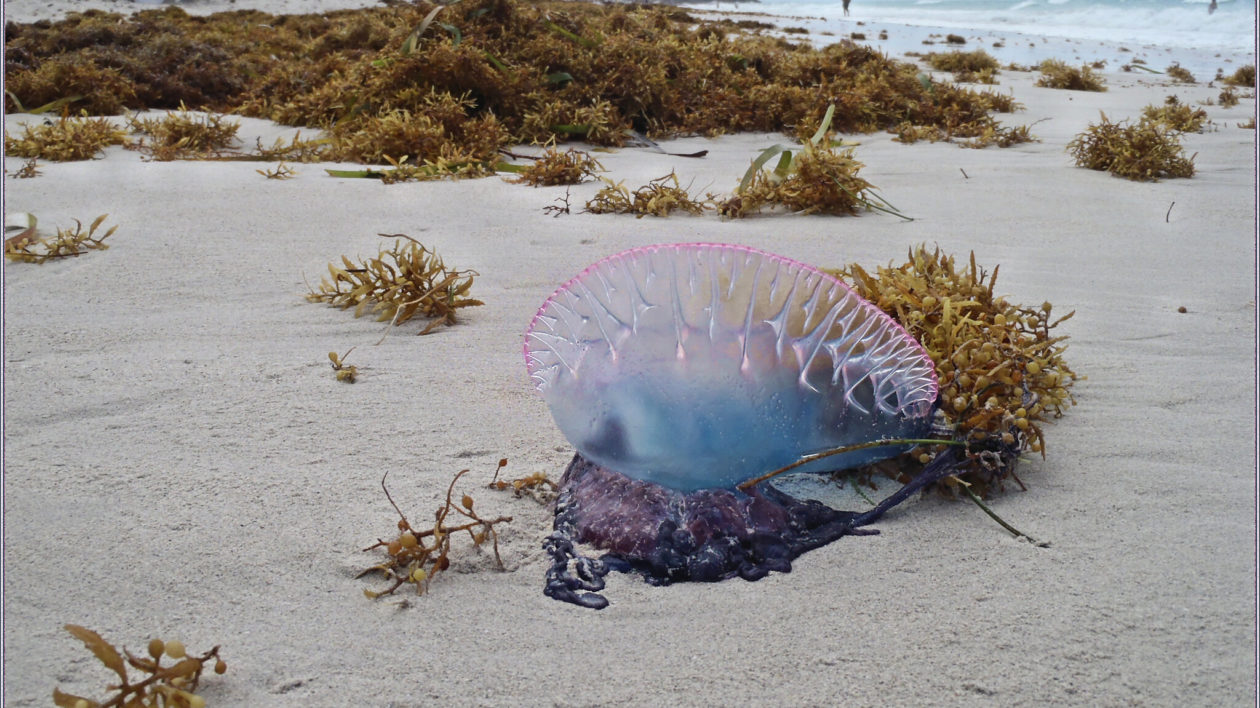
Avoid the Sting
Jellyfish can be bothersome to swimmers all over the world. Some stings are like little electric shocks, some feel like bee stings and some will leave you paralyzed or worse. Again, the old cliché of an “ounce of prevention” goes a long way to avoiding stings. Before taking a dip, walk the beach a bit. If you see a lot of jellies along the shoreline, you can be sure they are in the water, too.
One of the most common – that also has one of the most painful stings – is the bluebottle or Portuguese man o’war. Storms and strong onshore winds can blow them in towards prime swimming spots, wait until the wind dies down before you go in.
Wearing a long-sleeve sun shirt adds some extra protection. It’s difficult for the nematocysts to penetrate through the material.
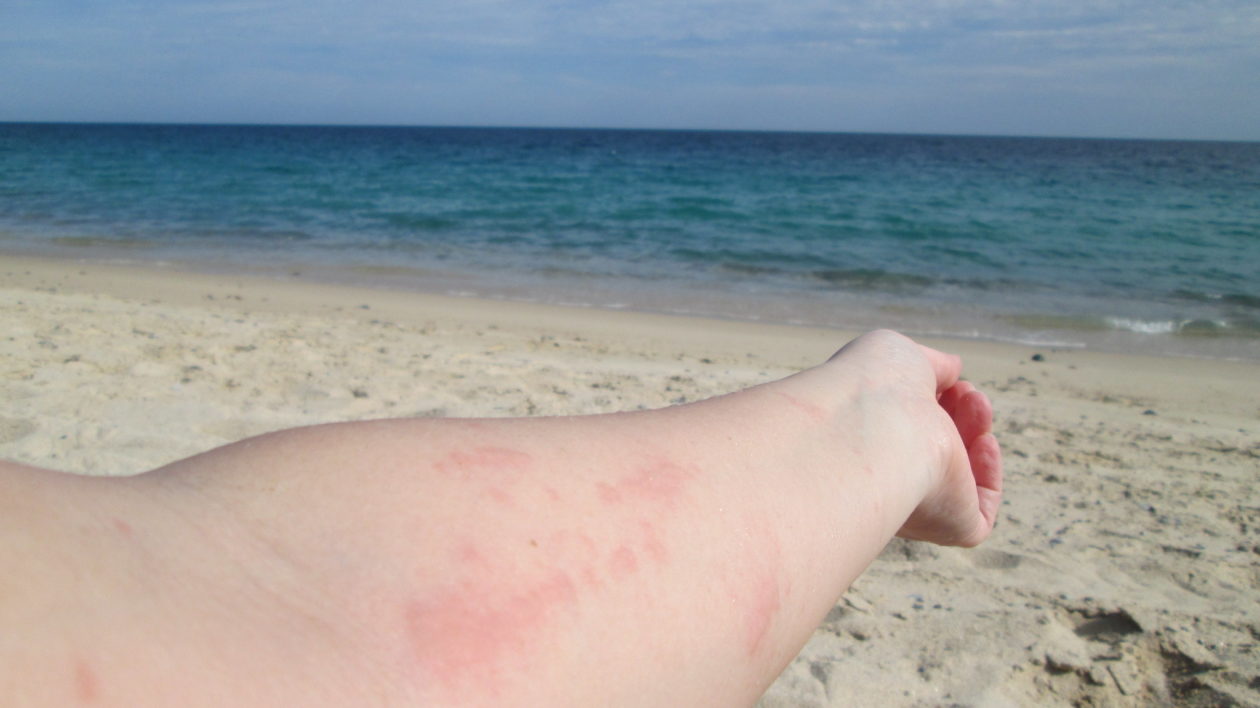
After the Sting
Let’s say you do get stung. Don’t reach for your drinking water bottle to wash it off. “That’s the worst thing you can do,” says Pollock. “It causes the stinging cells to fire on your skin.”
These stinging cells, called nematocysts, fire off both as a prey retention and defensive measure. But they don’t all fire at once. Freshwater causes all the nematocysts to fire. “You also shouldn’t try to brush them off with your hand,” says Pollock. “That causes more to fire and additional stings.”
Instead, try to wash off the tentacle with saltwater and without putting pressure on it. Many suggest putting vinegar, meat tenderizer or, as many popular media will tell you, urine on the tentacle. But recent research suggests hot (not scalding) water will neutralize the stinging cells. The hot water breaks down the proteins in the nematocysts.
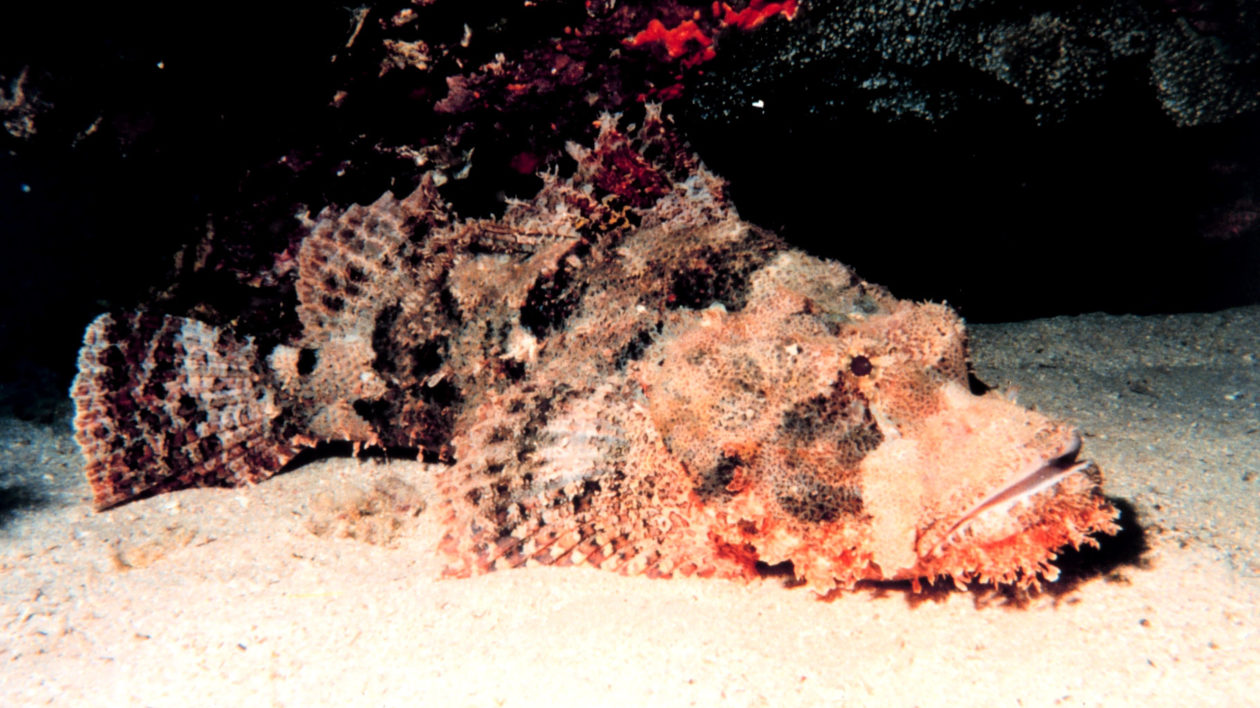
Watch Your Step
It’s natural to want to look out across the ocean as you wade into the surf. But it pays to watch where you put your feet. (That actually applies to any outdoor pursuit). While the stonefish may not be a creature you know, much less worry about at the beach, it is one to look out for if you’re on a tropical vacation.
These sedentary, venomous fish camouflage themselves among the seaweed and gravel in warm, shallow coastal waters. They can be very hard to spot and have a row of sharp poisonous dorsal spines that can cause serious pain if stepped on.
“I stepped on one and my foot immediately started swelling up, with redness spreading up my leg,” says Pollock. “Luckily, a local resident made a compress from plants that worked quickly. But lacking that, I’d seek medical attention as soon as possible.”
In the rocky areas of the Pacific coast, sea urchins can be common. The urchin’s spines are segmented, making them difficult to extract. “It’s very painful. You keep digging and digging,” says Pollock. “You literally have to wait for them to fester out.”
Urchins feed in rocky, rubble-strewn areas. If you’re going for a coastal walk, wear close-toed water shoes. Or avoid areas where you have a strong chance of stepping on one.
It’s often pretty easy to avoid putting yourself in dangerous situations. If conditions like murky water or strong winds exist, you can relax on your towel, play beach volleyball or build a sandcastle.
“These animals are reacting to your presence,” says Pollock. “It’s not like sharks are going to come out onto the beach and bite you on your blanket. At times, it’s safest to not go in the water. Learn the local conditions and the local creatures, make educated decisions and have a wonderful time on your vacation.”
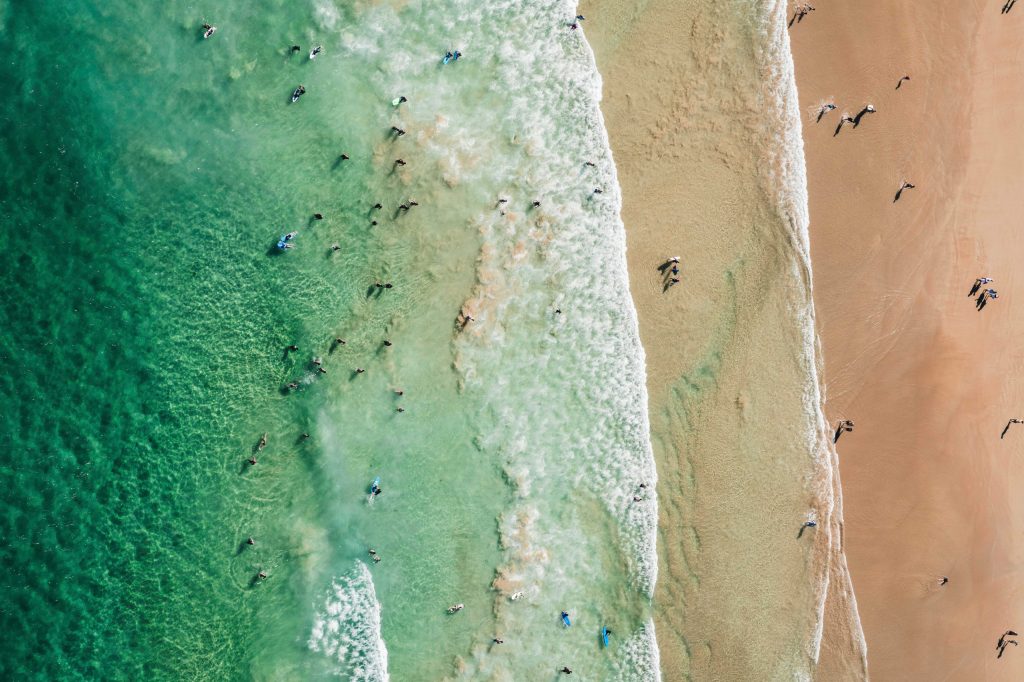



Join the Discussion